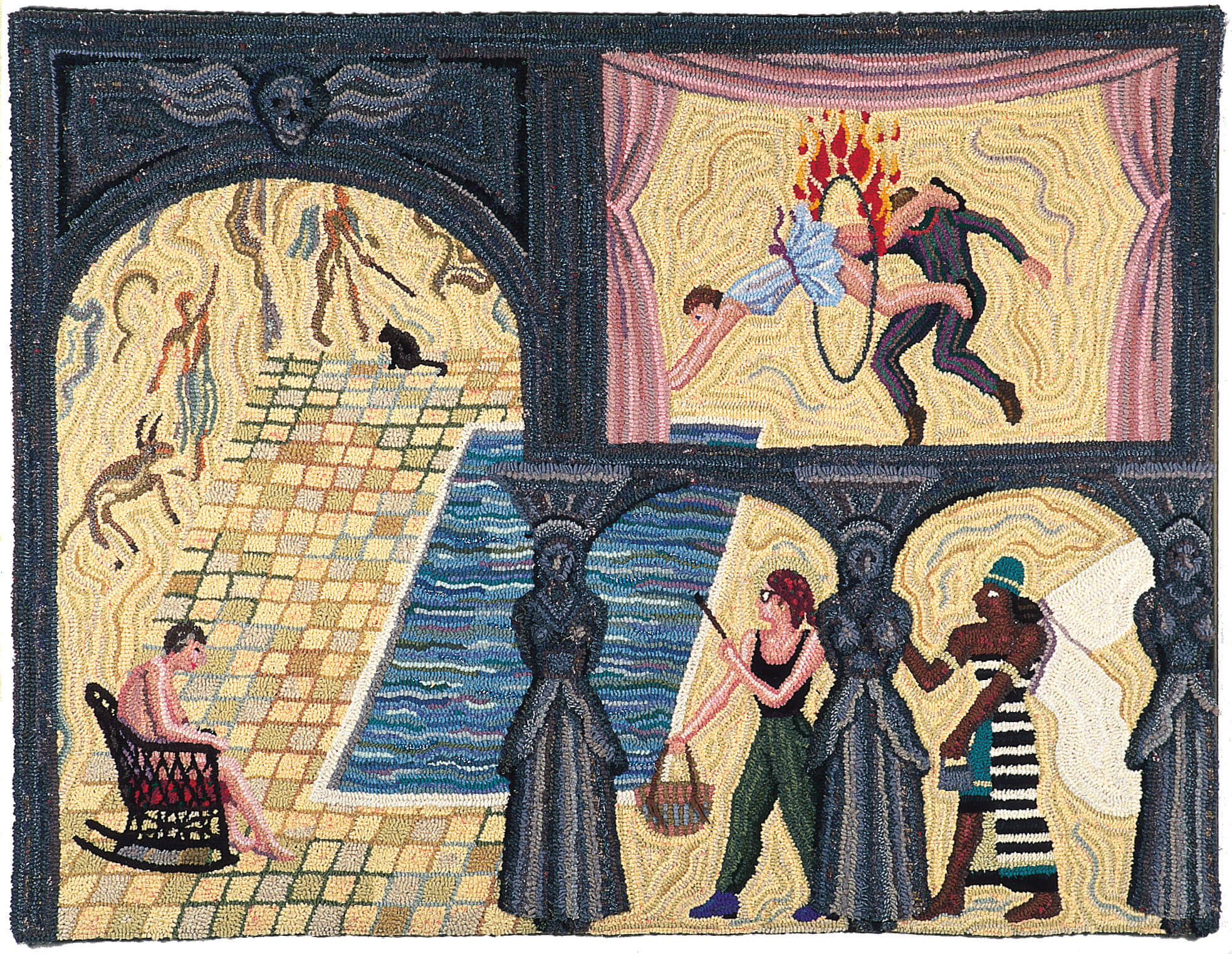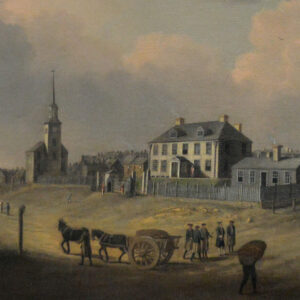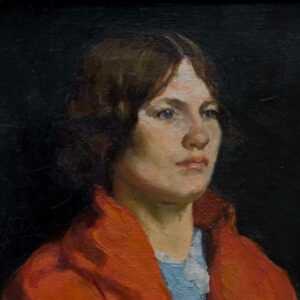Nancy Edell (1942–2005)

Nancy Edell, Waiting, 1986
Found wool rags, acrylic and polyester fabrics on linen, and felt, 92 x 121 cm
Art Gallery of Nova Scotia, Halifax
Throughout the 1980s, 1990s, and early 2000s, one of the most prominent artists in Halifax’s public and artist-run gallery exhibition programs was Nancy Edell. Her feminist-inspired appropriation of the folk art technique of rug hooking incorporated a traditional folk technique leavened with whimsical humour and insightful feminism. Steeped in narrative, her hooked rugs hark back to her earlier work as an animator. She also worked extensively as a printmaker, and in her later career she combined printmaking with rug hooking. Edell taught at the Nova Scotia College of Art and Design (NSCAD) from 1982 to 2002. She was influential as an example to subsequent generations of artists who studied at NSCAD, such as Colleen Wolstenholme (b.1963), installation artist Laura Vickerson (b.1959), and sculptors Sarah Maloney (b.1965) and Amanda Schoppel (b.1974), who incorporated techniques and media traditionally associated with “women’s work”—the so-called “domestic arts”—in their fine art practices.
-
Nancy Edell, Bear in Point Pleasant Park, 1989
Monotype with charcoal, Conté crayon, coloured pencil, and collage on wove paper with collage of various torn papers, overall: 76 x 212 cm; sheet: 76 x 106 cm each
National Gallery of Canada, Ottawa -
Nancy Edell, Operating, 1994
Found wool rag and burlap, 110 x 140 cm
Art Gallery of Nova Scotia, Halifax -
Nancy Edell, Syncoryne Mirabilis, 2004
Mixed media on plywood and hooked rug, 216 x 360 cm
Though born in Nebraska, Nancy Edell moved to Bayswater, Nova Scotia, in 1980 from Winnipeg, where she had since the early 1970s made a name in animation. In Nova Scotia the focus of her art practice underwent a profound shift, from the collective community of the film world to the comparatively solitary life of the visual artist. Trained as an animator, in Nova Scotia Edell taught herself the traditional technique of rug hooking, creating complex narratives inspired by her feminist take on art history and contemporary society. As curator and artist Susan Gibson Garvey (b.1947) has noted, however, Edell’s work cannot be reduced to its politics: “If we look at the whole of her work from the late ’60s to the present, her choice of imagery becomes far more ambiguous, and the politics inherent in their complex narratives rather more unsettling.”
That unsettling quality was present throughout Edell’s works, from her earliest rugs, to her prints, to her last large multimedia works. Packed with art historical references, unabashedly sexual imagery, and motifs of journeys, her work is marked by a dreamlike quality and a cheerful humour. Her series Art Nuns, exhibited in a touring show organized by the Art Gallery of Nova Scotia in 1991, imagined a community of women dedicated to artmaking. In her 2004 survey, the works were described as lampooning “the late-modernist cult of art, the notion of art replacing religion as the source of spirituality in a secular age.”
Edell was also a prolific printmaker, and in the late 1990s she began to integrate prints (and the wooden plates from her large woodcuts) into sculptural assemblages with rugs and paintings. A work such as Syncoryne Mirabilis, 2004, with its combination of painting, carving, textiles, and collage, highlights the rich and evocative imagery she favoured. As Gibson Garvey observed, Edell depicted a world of “fornication and fecundity, teeming with biological urgency.” In her last years that urgency was translated into a series of works addressing the cancer to which she would succumb in 2005. Nancy Edell’s work is included in numerous public collections, including those of the National Gallery of Canada, the Winnipeg Art Gallery, and the Art Gallery of Nova Scotia.

 About the Author
About the Author
 More Online Art Books
More Online Art Books
 Acknowledgements
Acknowledgements